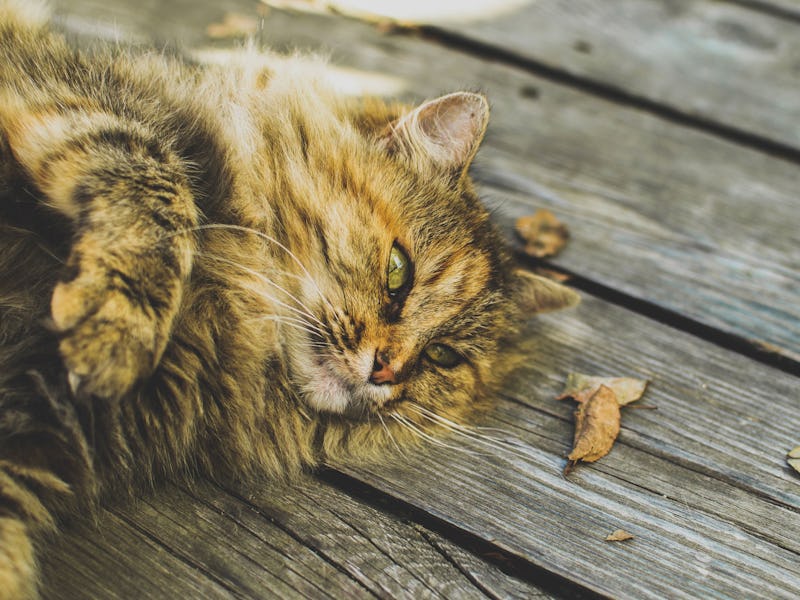Science Can Only Guess Why Cats Are Scared of Cucumbers
Maybe cool it with the cucumbers.

The internet’s obsession with cat footage continues! This month we collectively watched, again and again and then showed our coworkers, the various video compilations that show exactly what happens when you surreptitiously place a cucumber, already one of the funniest gourds, behind a cat:
But as soon as the videos were finished, we’re presented with a looming question and then lots of smart-sounding assertions from know-it-alls who don’t even live with a cat: Why do cats react this way? The short answer is that we don’t really know, but cats offer a few evolutionary clues from which we can launch in to speculation. So we asked three experts.
“Cats are naturally a very reactive species,” says Dr. Violet Kirk, a veterinarian based at Hillsdale Animal Hospital of Greensboro, North Carolina. “They have developed these traits over thousands of years of ‘survival of the fittest’ evolution. Those with skills as ‘quick as a cat’ were the ones to snag the bird, evade the wolf, and grasp the tree branch.”
Sarah Ellis, Ph.D., a research fellow at the University of Lincoln in England, says we can’t know if cats have “an innate fear of snakes — that the cucumber represents” or if their leaping reaction is “simply a startling response as the object was not there when they approached the food bowl to eat” — yet was there when they turned around.
Despite countless generations of house cats living a life of relative luxury in what seems like domestic bliss, the animals are wired to survive:
“It is not surprising that though our felis catus has been domesticated for hundreds of years, this deeply ingrained trait of involuntary hyperkinetic movements has ran thick in their blood,” she says.
“Cats can be startled by a number of things — most recently noted on this list are cucumbers. It is unlikely that it is the cucumber specifically but more likely the shape of a dark, long, roughened object.
“This object is likely evoking this natural reflex based on its similarity to dangerous vermin, stalky lizards or legless monsters.”
Another idea is that the sudden appearance of the cucumber is what scares the cat.
Sir Patrick Bateson, professor emeritus at the University of Cambridge in England, says it’s not cucumbers, specifically:
“I am not convinced that it’s just cucumbers that scare the cats,” Bateson says. “Anything surprising or novel can elicit the same reaction as is evident from some of the videos. Undoubtedly the reaction to unexpected novelty is of survival value as is the period of investigation that shows up in some of the sequences.”
Before we go, a word about catnip: It might be tempting to surprise your cat with a cucumber, but unless you enjoy causing your beloved pet to undergo unneeded stress, it’s wise not to mess with it while it’s high on the stuff.
“Cats under the influence of catnip are likely to be more reactive and use should be limited around cucumbers,” Kirk says, before advising, “it is recommended to not place cucumbers or similarly shaped objects near cats as it may cause unnecessary anxiety.”
So maybe cool it with the cucumbers. You’ll always have YouTube.